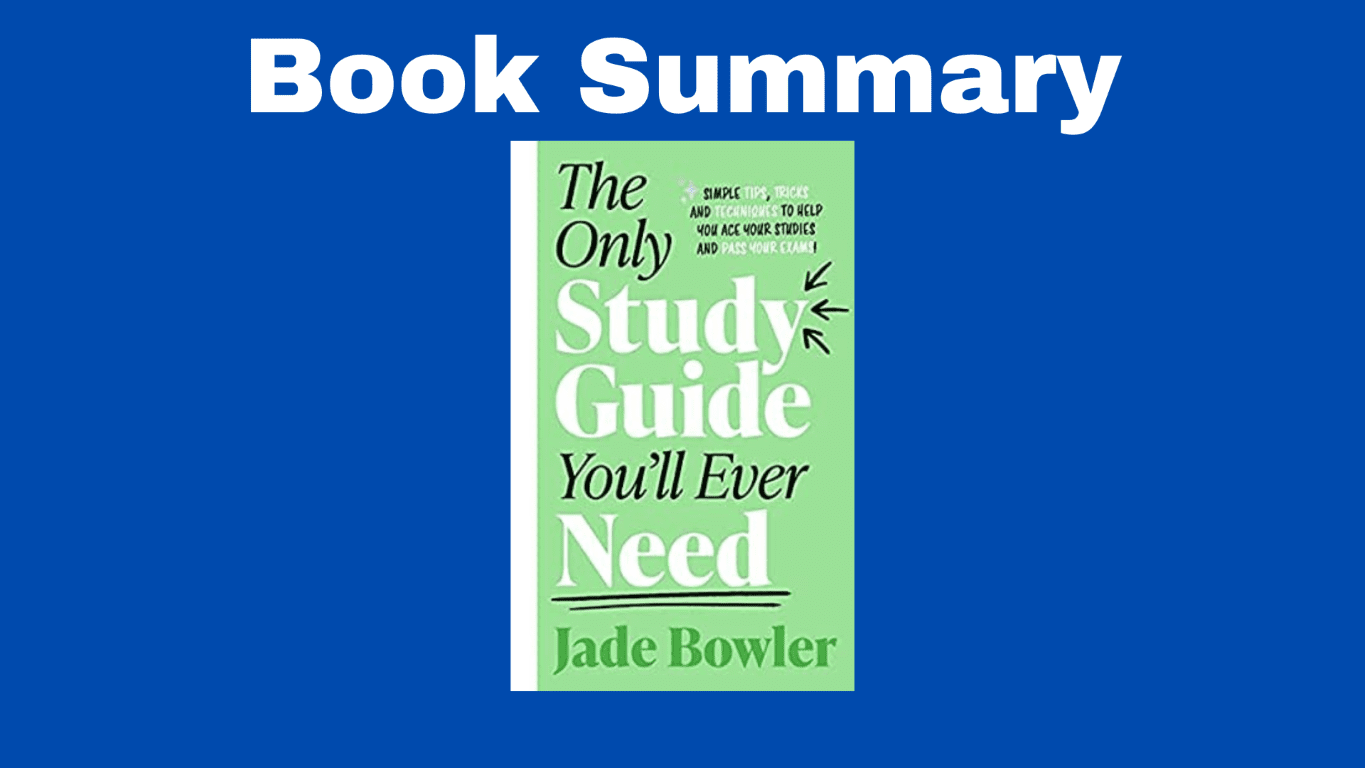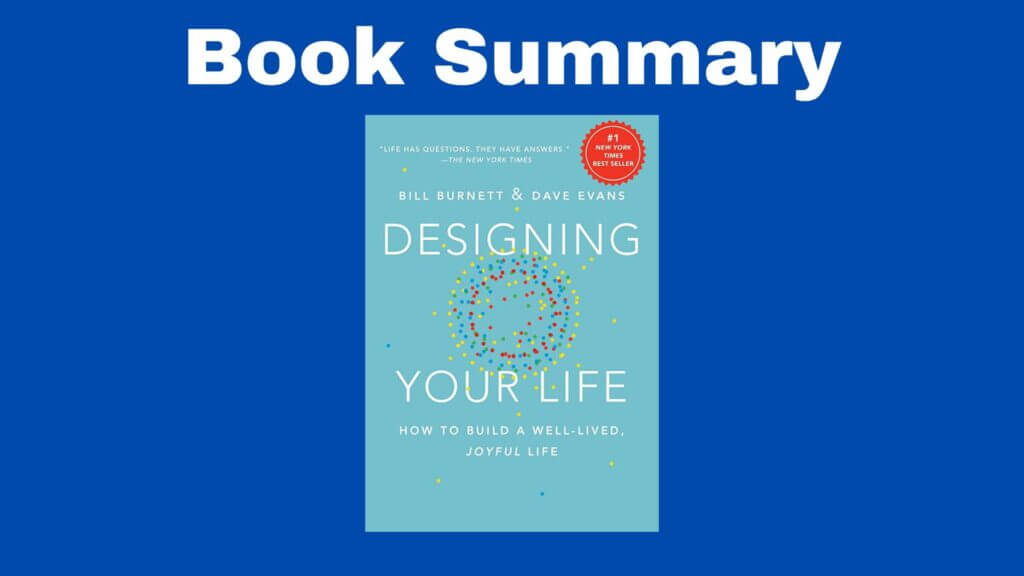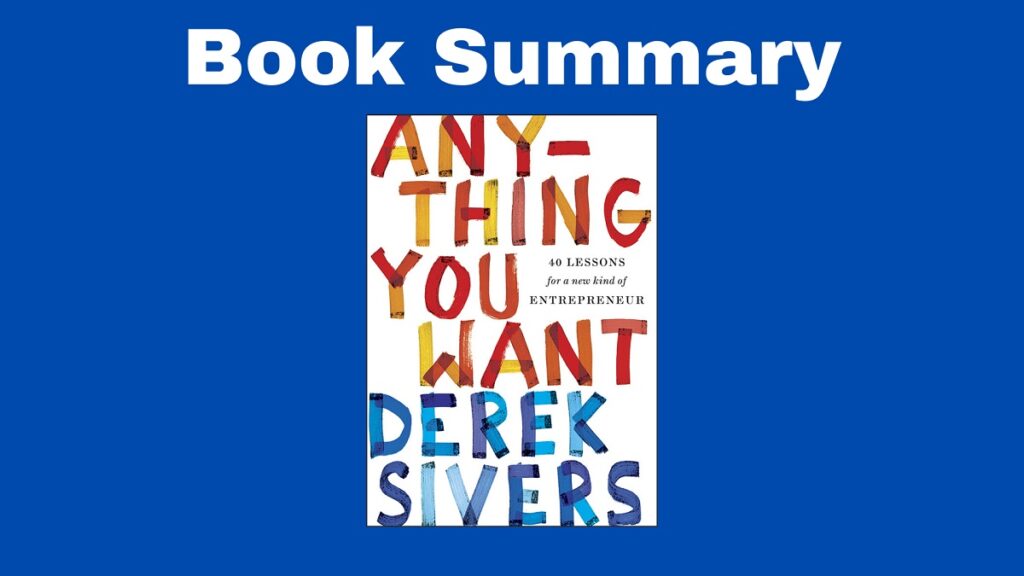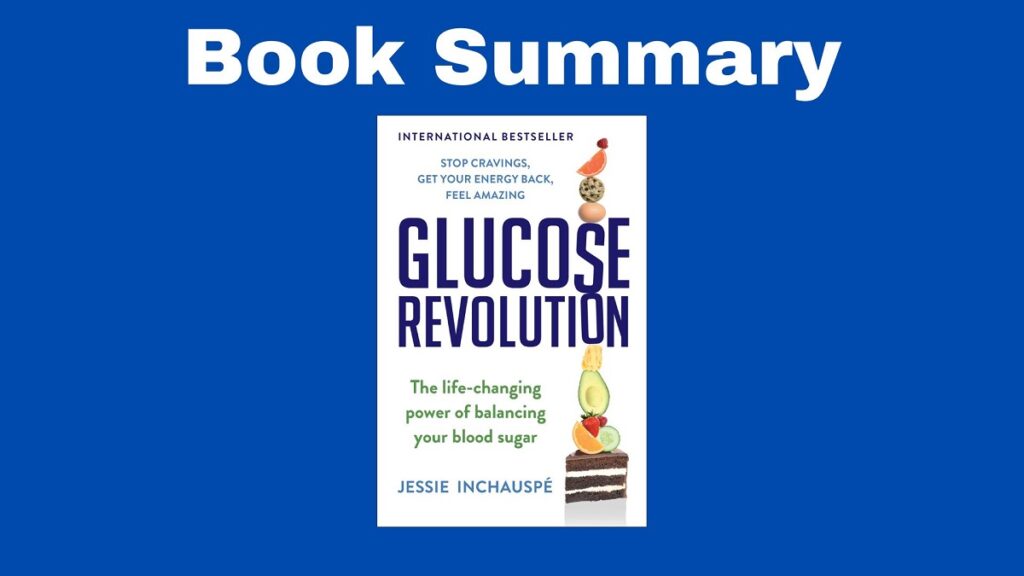The Book in Three Sentences
The Only Study Guide You’ll Ever Need is a collection of techniques to help university students get through their studies. Most of the tools presented in the book are backed by scientific studies. The book covers everything you need for university exams.
The Only Study Guide You’ll Ever Need Summary
Chapter 1: Motivation
You might lack motivation because of:
- Laziness or “lack of inspiration”.
- Conformity: copying others for our own benefit.
- Circumstances: personal issues that might get in the way of study.
There are two types of motivation: intrinsic motivation and extrinsic motivation. Intrinsic motivation is more sustainable since it comes from the love of learning and the process itself. Extrinsic motivation refers to all the external rewards, such as grades or praise.
Accomplished students succeed because of their mindset and consistency.
Chapter 2: The Academic System
The educational system has problems because it carries issues from its conception. Back in the industrialized era workers were encouraged to repeat activities.
Top reasons to work hard at school:
- School is what you make of it: there’s room for experimentation in the academic system.
- Options: getting good grades gives you more options either for universities you want to apply to or the job you can get.
- Discipline and hard work: working hard at school gives you discipline, a routine, goals and a roadmap to achieve them, and a wide array of problem-solving techniques.
- The reinforcing feedback loop of success: school gives you the opportunity to define success.
- The academic system is a game, and you came to win: the academic system is a game with rules and you can develop a winning formula.
Chapter 3: How We Learn
The author created a framework called SAAD to make sure revision works. Each letter from the framework stands for a term or concept.
SAAD: Spaced Repetition.
Hermann Ebbinghaus, who some people call the father of memory because he carried out experiments about human retention, discovered the forgetting curve. When you first approach something new, your memory starts strong: you revise a concept, understand it, and recall the information. But memory decays over time. To improve the curve, you review the information again, multiple times, and at set intervals from first learning it. By reviewing the information, you “reset” your memory. The more you review a concept, the longer you can wait to review it again. Eventually, you’ll be able to review a given concept once a month or once every few months. With this system, you can review concepts every day for five minutes.
You can create a system around spaced repetition (using spreadsheets, or Notion) with the concepts you’re trying to learn and the time when you last studied it. You don’t have to revise longer, just more frequently.
Stephen Kosslyn, a psychologist and neuroscientist, divided human learning into two: “think it through” and “make and use associations”. “Think it through”: the more deeply you think about an idea, the more you remember it. An example would be “active recall”, a technique that instead of re-reading, encourages you to think about what you remember. Active recall is about being active rather than passive and the main problem with it is that it goes against human nature since we’re always looking for the path of least resistance.
SAAD: Associations
The second of Kossly’s maxims is “make and use associations”. Revising means connecting what you’re learning to previous knowledge. In other words, revising is about making associations and using them. You can’t expect to learn a brand-new concept with no foundational knowledge to relate it to.
SAAD: Desirable Difficulty
The desirable difficulty is about realizing when something is hard and doing it anyway or making something more difficult. The difficulty should be right for you. If it is, the content will be more meaningful.
Chapter 4: Study Methods
Students are seldom taught how to study. The first rule to learning to study is to ditch aesthetics. Don’t do something because it looks pretty. Instead, use any of the ten scientifically backed SAAD revision methods detailed below. They are less pretty but more functional.
The three main stages of studying are:
- Understand: This begins in the classroom. Reading, using a study guide, watching videos, and asking questions. Remember that you shouldn’t take down notes if you don’t understand the content.
- Learn: This is to recall and retrieve specific information.
- Apply: Practice a test to prove your knowledge.
Learning methods:
- Flashcards: they should be short, meaningful, and connected.
- Summarization from memory: notes are a useful foundation, but they don’t count as revision. Summarize with intention and do it half from memory (so summarize without copying). Try saying a summary out loud or explaining it to a friend.
- Chunking, chaining, and telling a story: Chunking is a useful technique for recall. You separate the information you’re trying to learn into small chunks that you then create individual associations. Each chunk is made by dividing something large into small units that are related to each other. Some people use acronyms or mnemonics to memorize long phrases, for example. Chaining is breaking down a process or event into a sequence of facts where you associate each new fact with the one before. Telling a story forces you to divide the information into smaller pieces that connect to each other in a logical sequence.
- Blurting: This is the author’s favorite technique. You take something you want to revise. You write yourself prompts, write down everything you remember about it and then compare your notes to the source material. The benefit of blurting is that you can see what you can and can’t remember.
- Sherlock’s mind palace: you associate a word or sentence to an object or action. This technique is useful to remember processes and facts.
- Object association: this is an extension of the mind palace. The individual details of any object can help you remember facts or processes.
- Textbook questions and revision guides: Here’s where you test your knowledge using practice questions.
- Practice essays: to write practice essays for any subject, use past paper questions, time yourself, plan your essay, pay attention to its organization and structure (it should follow a clear, easy-to-follow structure), use a variety of words, and ask someone to give you feedback.
- Timed essay plan: start at the end.
- Past papers and how to learn from them: Schedule a meeting with your teacher to discuss your mistakes.
Chapter 5: It’s Time for Timetables
The five Ps of success: “Perfect Planning Prevents Poor Performance”.
- What are your priority areas? Here’s where you focus on a specific subject or topic.
- Draft up a timetable in Notion, My Study Life, or Google Calendar.
- What else is going on in your life? Include extracurricular activities, events, or classes.
- When do you work best? Organize your life around the time when you work most optimally.
- Stick to the timetable as best you can, but adapt it as you practice. Timetables should be flexible, especially when you first start.
As a general rule, we tend to underestimate tasks and overvalue our abilities. Therefore, we think things are going to take less than they do.
The Don’ts of Timetabling
- Time-to-time scheduling without “shuffling time” in between.
- Too rigid
- Too vague
- Giving up on the timetable when you miss one task
- Not scheduling breaks and other life activities
The Do’s of Timetabling
- Give yourself breaks
- Make your timetable flexible
- Adapt as you go on
- Make your timetable based on priority subjects and modules
- Plan tasks at times of the day you are most effective
Chapter 6: Productivity Hacks
Productivity isn’t about studying for hours on end, it’s about spending your time well. It’s about doing what needs to be done so that you can enjoy some free time. It’s about focusing on what’s important at a given moment and with intentionality.
Productivity = Output / Time
In the context of studying, productivity means optimizing for the most knowledge using the least amount of time.
Increase the quality of output: the 3Fs
- Focus: Lack of distractions, finding flow, single-tasking
- Forethought: Planning
- Fun: You are more productive when you’re having fun
The Pomodoro technique was developed by Francesco Cirillo in the late 1980s. It consists of dividing work into 25-minute parts separated by breaks. You focus on one task and one task only.
Monthly overviews and weekly plans (forethought): To be productive, understand your priorities. A way to achieve this is by brainstorming everything you want to get done over the course of a month. You then focus on everything that holds meaning to you. Once you’ve identified the outcomes, you need to identify goals. Finally, you break down those goals into smaller weekly goals.
To-do lists (forethought):
- Brain Dump: You write down everything you need to complete or everything that causes you stress.
- Specify, select, and prioritize.
- Slot your tasks into your timetable, schedule, or calendar.
Say no, meaningfully (focus)
Don’t overcommit by trying to please everyone. Sometimes you have to stop giving to others so that you can focus on your own goals. In the author’s words: “Learning to say no is about saying yes to yourself.”
High-density fun only
Instead of saying yes to everything when it comes to entertainment, only say yes to high-density fun. Prioritize a movie night, a sports session, or a new recipe. In order to do those activities that you love, you’ll actually feel motivated to finish the study session sooner.
Recommended apps (forethought, focus, and fun!):
- Notion
- Forest
- Todoist
- Any calendar app
Chapter 7: Homework Hacks
Eliminate the feeling of choice so that routine becomes automatic. Select a reward like watching a TV show, calling a friend, or watching a YouTube video.
Parkinson’s law says that work expands to fill the time you give it. Don’t give yourself hours to complete an activity that should take minutes.
The cause of procrastination is distractions. Use the Pomodoro technique to avoid it.
Every space in your environment should have a purpose. Don’t associate your desk with wasting time (such as using social media). If you don’t have a space, use the local library.
To organize your digital or physical space come up with a system. The author suggests a ring-binder folder for sheets and a tree-like system for online/digital files.
Make it fun… or not: for passive homework, make it fun (for example, take down notes while listening to music).
Chapter 8: Habit Formation
In order to balance school, work, and life, establish positive habits that look after your mental health. Implement mindfulness into your life.
What’s a habit? A habit isn’t a daily activity. If you feel like you have to do something, that’s not a habit, that’s a responsibility. According to Charles Duhigg, author of The Power of Habit, habits have three parts:
- A cue: something that triggers a habit (for instance, there’s a buzz and you immediately look at your phone).
- A routine: the action you perform.
- A reward: the desired state you want to achieve.
To get rid of bad habits:
- Identify the routine
- Identify the cue
- Identify the reward you’re looking for
- Replace the bad habit with a plan and stick to it
To start a new habit attach the desired habit to an existing one, make it a habit, and give it a cue. Habits are formed through repetition and over time.
The benefits of meditation include being mindful and being present. Use guided meditations at first (5-10 minutes a day) from well-known apps such as Headspace and Calm.
Chapter 9: Perfectionism and Fear of Failure
Think of failure as a chance to learn. A symptom of fear of failure is perfectionism. With perfectionism, you focus on small details instead of the big picture.
Improve yourself rather than prove yourself. Your concern should be growth, not failure.
To combat perfectionism, take into account the Pareto principle (sometimes called the 80/20 rule). In this context, the principle says that 80% of your knowledge and grades come from 20% of the total time you spend revising. Identify the most meaningful revision elements and prioritize them. Define what enough is so that you can start focusing on the process rather than the outcome.
Chapter 10: Mental Health
Talk about your mental health struggles and don’t isolate yourself emotionally. Accept that exams are stressful and they’re not everything in life.
Chapter 11: The Night Before the Exam
You need to be well-rested, healthy, and mentally prepared.
You have to be strategic for a last-minute revision. There are three phases of studying for exams:
- Understand
- Memorize or learn
- Apply
As a way to reduce stress, check, double-check, and triple-check. Double-check the when and where.
Struggling to sleep?
- Get off your phone
- Have a “bedtime wind-down”
- Express your feelings
The mindset for success:
- Positive visualization
- Being grateful
- Think greater than you feel
A test of character: Exams challenge discipline, work ethic, and your ability to take care of your mental health.
Chapter 12: Ready for Battle: Before, During, and After an Exam
The morning before an exam:
- M: Materials
- O: Organize early
- R: Revise (but don’t cram)
- N: No stress conversations
- I: Inhale/Exhale
- N: Nice reward later
- G: Go for it!
Exam variables:
- Time
- Knowledge
- Mindset
The best three things to do after an exam:
- Anything mind-numbing
- Write in a journal
Chapter 13: The Future You’re Studying for
Define your values: determine who you want to be, not how you want to make money.
See your life as something under your control. This is a short exercise that could potentially change your life since it illustrates that there are always options.
- Write down what your life will look like in five years if you continue on the path you’re on right now.
- Write down what your life will look like in five years if you choose a different, but realistic alternative path.
- Write down what your life will look like in five years if money and outside expectations didn’t matter.




